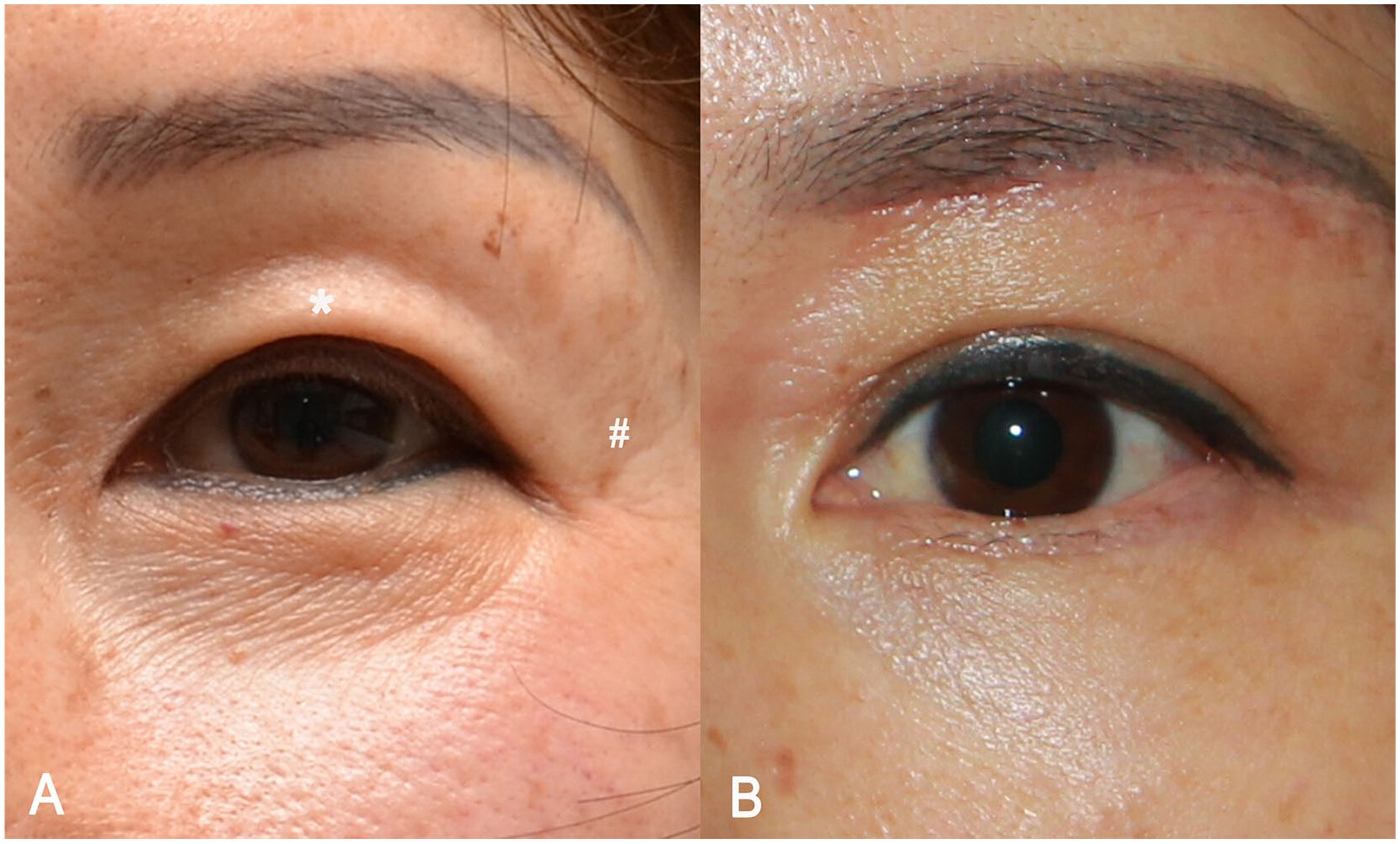
The rejuvenation of the upper face is a nuanced process that rarely benefits from a singular, isolated procedure. The complex interaction between the position of the eyebrows, the presence of excess skin on the upper eyelids, and the overall tension of the forehead musculature means that addressing one element without considering the others often yields an incomplete, or worse, an unnatural result. The decision to combine eyelid surgery, or blepharoplasty, with a brow lift is not simply a matter of surgical efficiency; it represents a commitment to holistic anatomical balance. When the brow descends due to the natural effects of gravity and volume loss, it presses skin downwards onto the upper eyelid. If a surgeon removes excess eyelid skin without correcting the underlying brow ptosis, the brow may subsequently drop further, creating a perpetually surprised or overly tight appearance. This is the core rationale for a combined approach, ensuring the entire aesthetic unit of the upper face is treated cohesively.
The Interplay of Two Distinct Procedures on a Unified Area
Blepharoplasty and a brow lift are distinct surgical modalities, each targeting specific anatomical structures with different goals. Eyelid surgery focuses on the immediate periorbital area, primarily involving the removal or repositioning of redundant skin, muscle, and fat from the upper and/or lower eyelids. This procedure directly addresses hooding that may obstruct vision or puffiness that creates a tired appearance. Conversely, a brow lift, often referred to as a forehead lift, is designed to elevate the eyebrows to a more youthful position and smooth the deep horizontal furrows and vertical glabellar lines etched into the forehead.
“Blepharoplasty and a brow lift are distinct surgical modalities, each targeting specific anatomical structures with different goals.”
The two procedures, however, are intricately linked by the common goal of opening and defining the eye area. Treating one component often influences the appearance of the other. For instance, a patient presenting with apparent severe upper eyelid hooding may find that a significant portion of this excess skin is actually a result of a heavy, descended brow. In such a case, performing a brow lift alone could resolve much of the perceived eyelid issue, or, more commonly, performing the brow lift first allows for a much more conservative and natural-looking blepharoplasty to follow. This sequencing and complementary action underscore the technical necessity of combination in many cases of advanced upper facial aging.
Diagnosing the Source of Upper Eyelid Hooding
A critical step in determining the optimal surgical strategy involves distinguishing the primary source of the upper eyelid heaviness. This requires a comprehensive physical analysis during the initial consultation, moving beyond simple visual inspection. The surgeon must ascertain how much of the excess skin on the upper eyelid is true dermatochalasis—actual redundant eyelid tissue—versus pseudoptosis, which is the illusion of droopiness caused by a sagging brow pushing the tissue downwards.
“A critical step in determining the optimal surgical strategy involves distinguishing the primary source of the upper eyelid heaviness.”
A simple manual elevation test, where the surgeon gently raises the patient’s brow to a desirable position, can be highly informative. If lifting the brow dramatically improves the appearance of the upper eyelid and eliminates the need for aggressive skin removal from the lid itself, then the brow position is the dominant concern. Over-resecting upper eyelid skin when the primary issue is an unaddressed low-set brow can lead to lagophthalmos, a condition where the patient is unable to fully close their eyelids, which has significant implications for eye health. Therefore, the combined procedure acts as a mechanism to balance tension and tissue removal.
Surgical Planning for Harmonious Facial Aesthetics
The surgical planning phase for a combined eyelid and brow lift is arguably more important than the execution itself, as it dictates the blueprint for the entire upper facial harmony. The surgeon must decide on the specific type of brow lift—endoscopic, temporal, or a variation of the direct approach—and then coordinate this with the blepharoplasty technique. The incisions for both are often strategically placed to overlap or to be concealed within natural creases or the hairline, maximizing the aesthetic benefit while minimizing visible scarring.
“The surgical planning phase for a combined eyelid and brow lift is arguably more important than the execution itself.”
Furthermore, the simultaneous operation allows the surgeon to modulate the degree of lift and skin excision in real-time, based on the initial response of the tissues, ensuring that the final resting position of the brows and eyelids is perfectly balanced. This precision minimizes the risk of the ‘surprised’ or ‘operated-on’ look that can result from over-correction in a single, isolated procedure. The integration of both procedures into a single session allows for an appreciation of the entire upper face as a single, interdependent aesthetic unit.
Efficiency in Anesthesia and Postoperative Recovery
One of the more practical, non-aesthetic benefits of merging the two operations into one session is the overall reduction in the patient’s exposure to anesthesia and the consolidation of the recovery period. Undergoing two separate procedures would necessitate two distinct anesthetic events, which, while generally safe, carry inherent risks that are compounded by repetition. Combining them into a single, comprehensive operative session minimizes this exposure.
“One of the more practical, non-aesthetic benefits of merging the two operations into one session is the overall reduction in the patient’s exposure to anesthesia.”
Equally significant is the logistical benefit of a single downtime. Recovery from cosmetic surgery requires time off from work, restrictions on physical activity, and management of swelling and bruising. Staging the procedures separately would mandate two rounds of this inconvenience, potentially doubling the total time a patient spends away from their normal routine. By performing the combined lift, the patient undergoes one consolidated healing phase, making the overall experience more manageable and less disruptive to their life.
Maximizing the Longevity of Rejuvenation
The decision to combine the procedures also has profound implications for the durability and longevity of the aesthetic results. Aging is a continuous, multi-layered process, affecting skin elasticity, underlying fat, muscle tone, and bone structure. An upper blepharoplasty addresses the superficial skin laxity of the eyelid but does little to counteract the ongoing downward pull of the forehead muscles or the descent of the brow fat pad.
“The decision to combine the procedures also has profound implications for the durability and longevity of the aesthetic results.”
By addressing the foundational element—the position of the brow—at the same time as refining the peripheral element—the eyelid skin—the combined approach creates a more stable, long-lasting rejuvenation. The lift and fixation of the brow essentially support the newly tightened eyelid contour, preventing premature recurrence of hooding that would inevitably occur if a low-set brow were left untreated. This synergistic effect ensures that the patient benefits from a result that not only looks more natural initially but also remains aesthetically pleasing for a longer duration.
The Candidate Profile for Combination Surgery
Identifying the ideal candidate for combining a brow lift with eyelid surgery is crucial for ensuring high patient satisfaction and optimal outcomes. The best candidates are individuals who exhibit clear, co-existing signs of aging in both the orbital and frontal regions. This includes patients with significant brow ptosis—a resting brow position below the orbital rim—coupled with excess upper eyelid skin and fat prolapse.
“The best candidates are individuals who exhibit clear, co-existing signs of aging in both the orbital and frontal regions.”
Beyond anatomical considerations, ideal candidates should be in good general health, non-smokers, and possess realistic expectations regarding the surgical outcome. They must understand that the goal is comprehensive rejuvenation, not transformation into an idealized, unrelated image. The patient whose primary complaint is a tired or stern appearance, and who shows demonstrable improvement with the manual brow elevation test, is typically the strongest candidate for this integrated surgical approach.
Potential for Over-Correction and Complication Management
While the combined approach offers superior aesthetic outcomes, it introduces an increased complexity in managing surgical nuances and potential complications. The surgeon must carefully calculate the degree of lift and skin excision, as over-correction in one area can exaggerate an issue in the other, such as creating an unnaturally high or peaked brow arch after the eyelid has been tightened. The delicate balance requires meticulous pre-operative planning and intra-operative precision.
“The surgeon must carefully calculate the degree of lift and skin excision, as over-correction in one area can exaggerate an issue in the other.”
Managing post-operative swelling and bruising can also be more pronounced than with a single procedure, simply due to the increased area of tissue manipulation. However, studies often show that when performed correctly, the combined procedure does not significantly increase the rate of major complications compared to either procedure performed in isolation. This highlights that the successful execution relies heavily on the surgeon’s experience and ability to visualize the three-dimensional, interconnected anatomy of the upper face.
Addressing Functional and Aesthetic Concerns Simultaneously
The aging process around the eyes is often both an aesthetic and a functional concern. Severe upper eyelid hooding and brow ptosis can physically obstruct the superior and peripheral visual fields, a condition that can often qualify the procedure for insurance coverage, though the primary motivation may be cosmetic. By combining the brow lift and blepharoplasty, the surgeon addresses the functional impairment—the physical obstruction of vision—at the same time as achieving the aesthetic goal of a more rested and alert appearance.
“Severe upper eyelid hooding and brow ptosis can physically obstruct the superior and peripheral visual fields.”
This dual benefit is a powerful driver for the combined approach. The patient receives not only an improvement in their facial appearance but also a tangible enhancement in their quality of life due to restored visual capacity. This synergy between form and function solidifies the rationale for integrating these two crucial procedures for comprehensive upper face rejuvenation.
